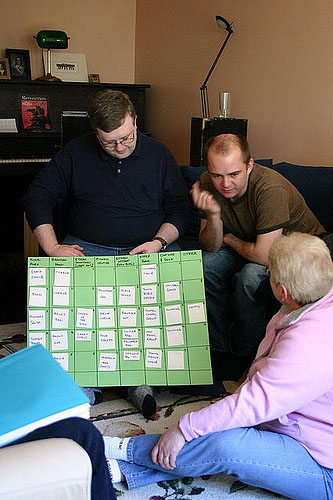8.6: 8.1 Types of Schedules -- Project Management for Instructional Designers
- Page ID
- 39856
8.1 Types of Schedules
Visit Audio Recordings for the audio version of this section.
LEARNING OBJECTIVE
- Define the types of project schedules.
The schedule develops as the project moves from its early conceptual phase into the execution phase.
SCHEDULES
When the scope of the project is being determined, a conceptual simple schedule that shows the major tasks and approximate start and end dates is developed to allow senior management to make decisions about the scope of the project. Detail is not required at this stage because entire tasks might be dropped from the scope, or the whole project might not be approved.
Master
If the project is chosen, a master schedule is created. It has major events and dates such as the starting date and the completion date. The master schedule is often part of a contract. Changes to the master schedule must be approved using a documented change process with approval by the project sponsor and client.
Detail
To execute the master schedule, the major activities are broken down into smaller activities and resources are assigned to those activities. The most detailed versions or portions of the schedule may be developed a few weeks prior to the execution of those activities and are called two-week plans. Portions of the master schedule that affect particular vendors might be sent to them so they can provide detailed activities that they would perform.
KEY TAKEAWAYS
- Types of schedules vary in detail. A broad, general conceptual schedule is used in the earliest phases of the project design. A master schedule with start date, milestones, and completion date becomes part of the contract and is changed by mutual agreement using a formal change process. Details are added to the master schedule as needed to perform the work of the project activities.


